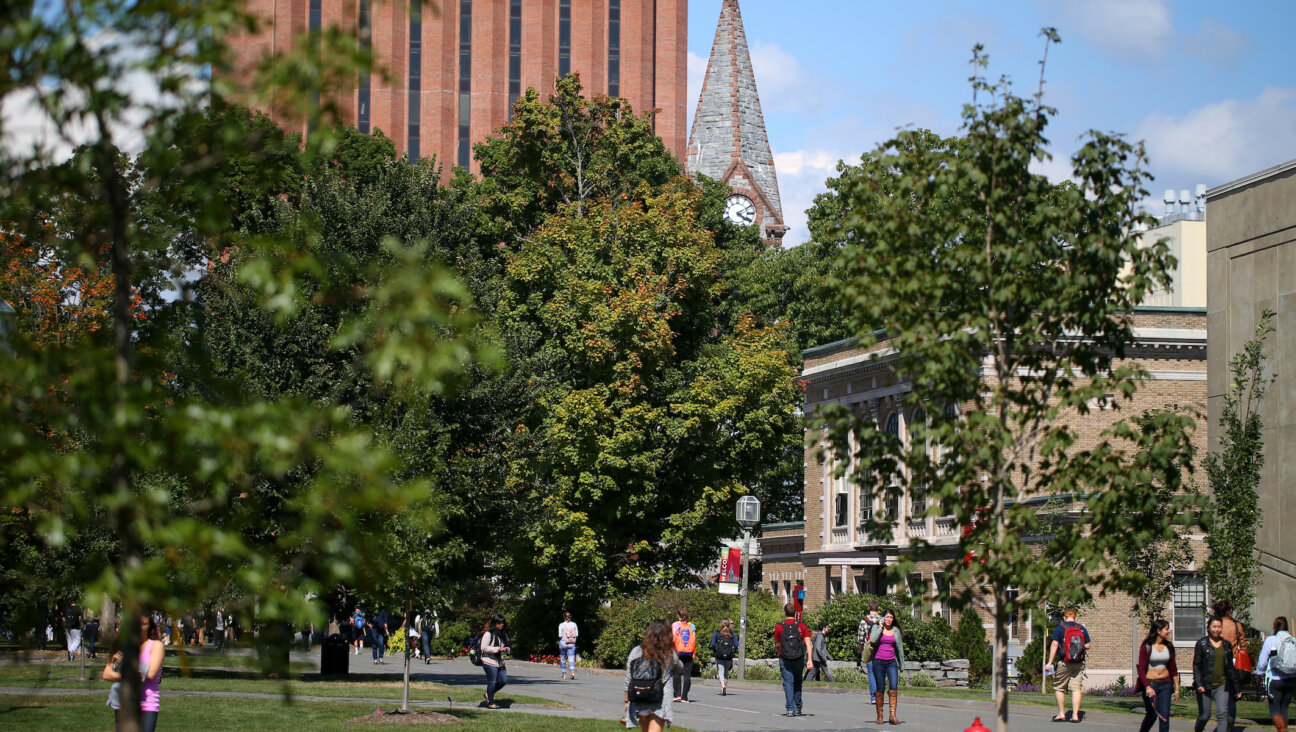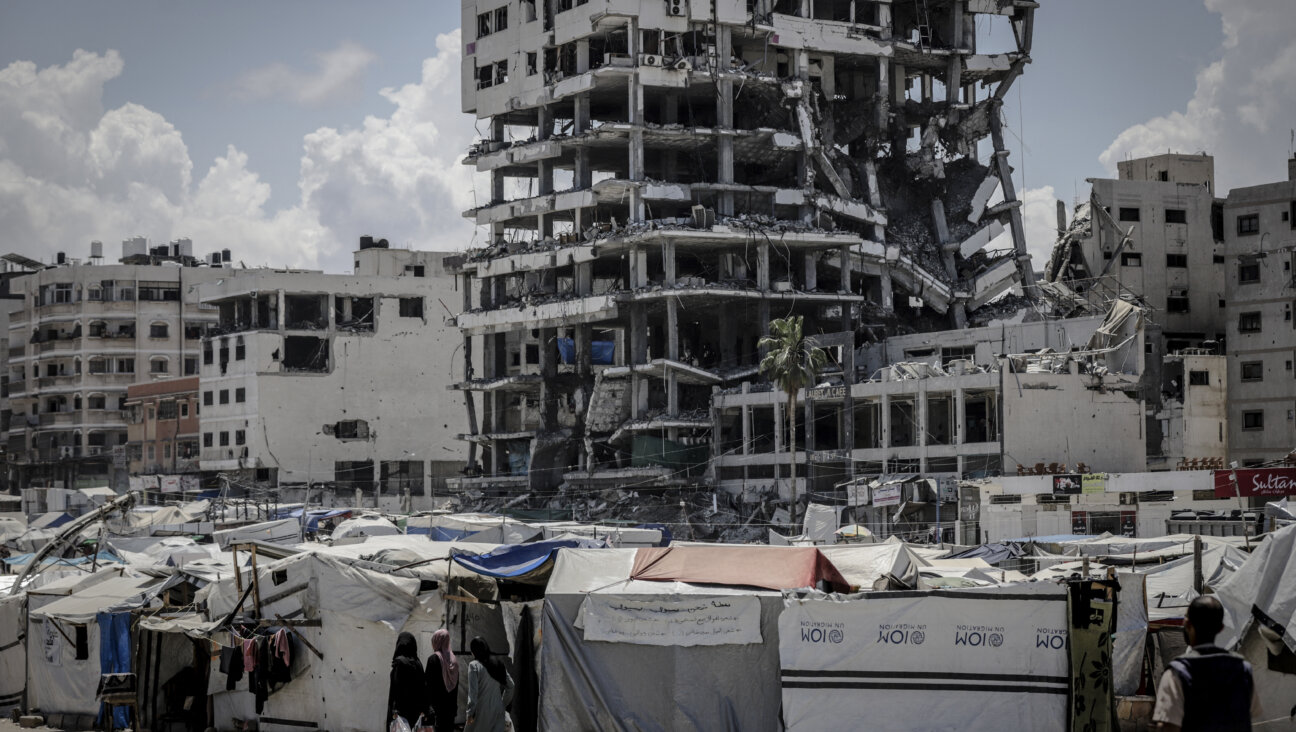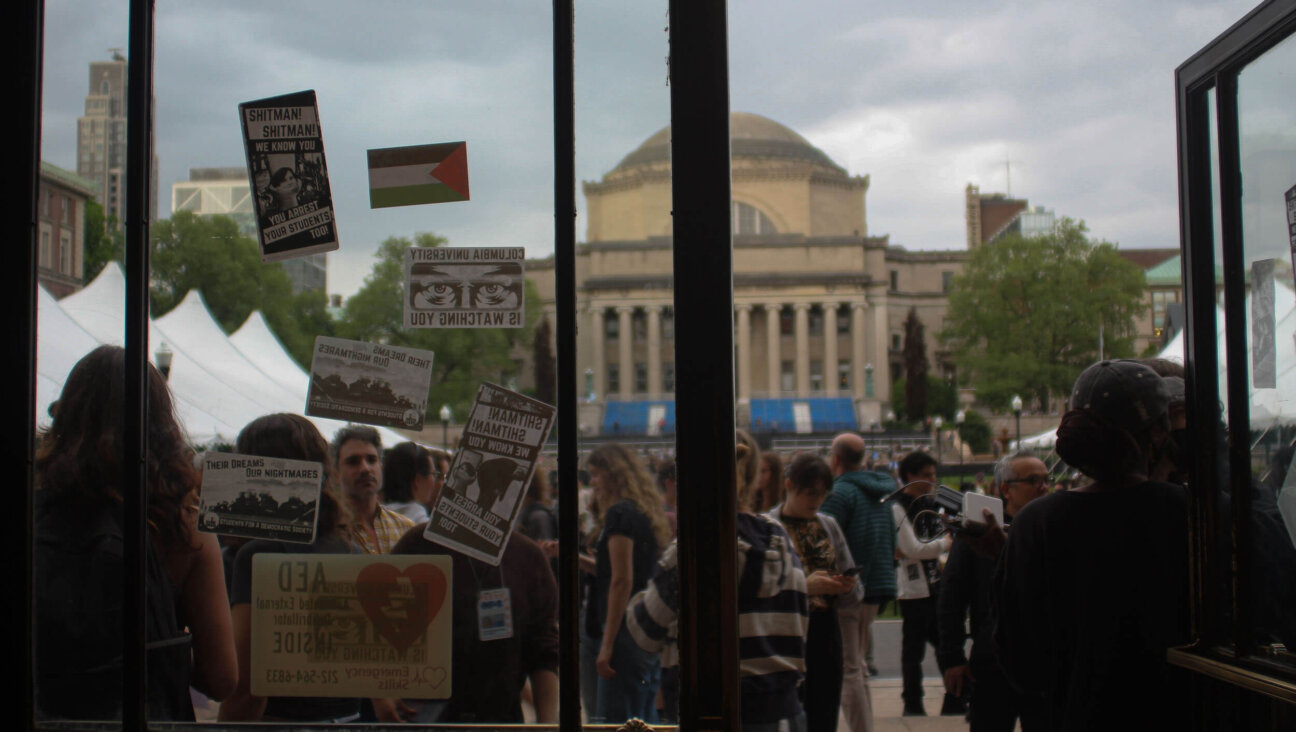Finding Hope in Images of Sarajevo

Escape: A young Muslim boy named Denis who was evacuated from besieged Sarajevo and now lives in Vienna and works with the Jewish community. Image by Edward Serotta
I went to the opening of the modest but powerful exhibit “Survival in Sarajevo” in Manhattan on October 7 hoping for a hint of optimism about Jews, Muslims, Christians and co-existence after such a brutal summer. It was there — in well-meaning speeches, poignant images and a genuinely inspiring story about Jewish goodness. But lurking beneath the surface were reminders of how it is nearly impossible to suppress the very worst in human behavior.
The photographs were shot by Edward Serotta, director of Centropa, an institute dedicated to preserving 20th-century Jewish life in Central and Eastern Europe, and set during the siege of Sarajevo from 1992 until 1995, the longest in modern history. They tell the story of La Benevolencija, the Jewish community’s humanitarian response, which turned a synagogue into a shelter, soup kitchen, free medical and dental clinic and post office for desperate residents of all faiths.
So desperate that, as Ljerka Danon was quoted in the exhibit, “If we only had a little more food, it would be like the Second World War.”
The story of Jews who helped others — both individually and with the crucial assistance of the American Jewish Joint Distribution Committee — is a welcome tonic as anti-Semitism again plagues pockets of Europe. The narrative of tribal hatred and violence in Ukraine and Syria and elsewhere in the Middle East can be countered.
But that narrative persists for good reason. Samantha Power, America’s ambassador to the United Nations, raised the connection to Syria in her remarks, amplified afterwards in an interview. The tactics used to strangle Sarajevo are “put to devastating use by the Assad regime,” she told me. Yet the United States and the West have been powerless to stop him.
Meantime, the war crimes trial of Radovan Karadzic, the former Bosnian Serb leader charged with genocide, only ended the same day the exhibit opened. “Justice cannot come soon enough,” Power said. Until it does, stories like the survival of Sarajevo may be all we have.
The Forward is free to read, but it isn’t free to produce

I hope you appreciated this article. Before you go, I’d like to ask you to please support the Forward.
Now more than ever, American Jews need independent news they can trust, with reporting driven by truth, not ideology. We serve you, not any ideological agenda.
At a time when other newsrooms are closing or cutting back, the Forward has removed its paywall and invested additional resources to report on the ground from Israel and around the U.S. on the impact of the war, rising antisemitism and polarized discourse.
This is a great time to support independent Jewish journalism you rely on. Make a gift today!
— Rachel Fishman Feddersen, Publisher and CEO
Support our mission to tell the Jewish story fully and fairly.
Most Popular
- 1

Fast Forward Ye debuts ‘Heil Hitler’ music video that includes a sample of a Hitler speech
- 2

Opinion It looks like Israel totally underestimated Trump
- 3

Culture Cardinals are Catholic, not Jewish — so why do they all wear yarmulkes?
- 4

Fast Forward Student suspended for ‘F— the Jews’ video defends himself on antisemitic podcast
In Case You Missed It
-

Culture How one Jewish woman fought the Nazis — and helped found a new Italian republic
-

Opinion It looks like Israel totally underestimated Trump
-

Fast Forward Betar ‘almost exclusively triggered’ former student’s detention, judge says
-

Fast Forward ‘Honey, he’s had enough of you’: Trump’s Middle East moves increasingly appear to sideline Israel
-
Shop the Forward Store
100% of profits support our journalism
Republish This Story
Please read before republishing
We’re happy to make this story available to republish for free, unless it originated with JTA, Haaretz or another publication (as indicated on the article) and as long as you follow our guidelines.
You must comply with the following:
- Credit the Forward
- Retain our pixel
- Preserve our canonical link in Google search
- Add a noindex tag in Google search
See our full guidelines for more information, and this guide for detail about canonical URLs.
To republish, copy the HTML by clicking on the yellow button to the right; it includes our tracking pixel, all paragraph styles and hyperlinks, the author byline and credit to the Forward. It does not include images; to avoid copyright violations, you must add them manually, following our guidelines. Please email us at [email protected], subject line “republish,” with any questions or to let us know what stories you’re picking up.















